Attractions and Potentials for Tourism in Natal and Rio Grande do Norte
Renato Fernandes, Rio Grande do Norte State Secretary for Tourism (SETUR)
Renato Fernandes from SETUR talks about the great attractions and potentials for tourism in Natal and Rio Grande do Norte. He also discusses the importance of business tourism, investment opportunities and the legacy of the World Cup for the city and the state.
Interview with Renato Fernandes, Rio Grande do Norte State Secretary for Tourism (SETUR)
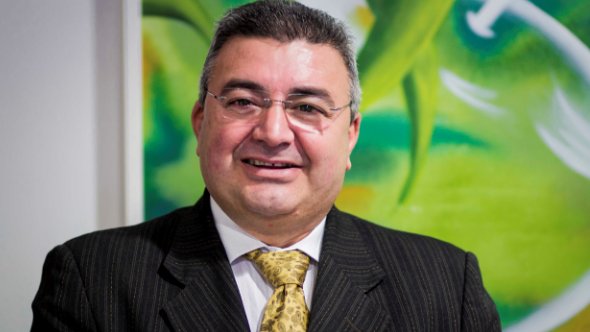
I would like to begin this interview with an introduction to tourism here in Natal and Rio Grande do Norte. Could you also tell us a bit about the attractions in this state and in its capital?
There is nothing as transversal as tourism. Tourism affects the guy who sells tapioca, the guy who sells coconut water, the guy that sells ice cream, the taxi man, the hotel owner, the owner the transfer company, etc. Everyone has something to gain from tourism from the poorest to the richest.
Rio Grande do Norte is a privileged state, different to other states in Brazil. What really distinguishes this state is its geographical position, we are on the corner of the country; we call ourselves ‘the elbow of South America’. This makes us the closest port in South America to Europe, Africa and America. A flight from Natal to Dakar in Africa takes just 3 and a half hours and a flight from Natal to Lisbon takes 5 and a half to 6 hours. Therefore this is something that really sets us apart and enables us not only to be an exit point but also an entry point into South America. Another advantage of our location is that we are nearly equidistant to Manaus in the Amazon and Porto Alegre in Rio Grande do Sul.
Another highlight of this state is its natural beauty; Rio Grande do Norte has more than 400km of coastline and the temperature of the water is the same all year round at 26 degrees. Our main characteristics are sun and sea, we get just 400 to 600mm of rainfall a year making us the sun capital of Brazil and this too is one of our great attractions. So we are known for our sunshine and beaches, but we are now trying to add more to our profile.
We have a very interesting culture and history in this state. The federal government has recently been carrying out market research into what are the things that a tourist remembers about a place that they visit. These things tend to be the natural attractions, the gastronomy, the people and the culture. That’s why the state and the government are investing in our culture and the Department of Tourism is investing a lot in developing the tourism sector here in Rio Grande do Norte. Nothing is more transversal than tourism, because you can’t think about tourism without thinking in health, education, safety, infrastructure or culture.
Therefore we are creating some cultural apparatus so to speak here in Rio Grande do Norte. We are in the first phase of inaugurating the Rampa Museum during the first fortnight of April. What is the Rampa Museum? Well, Natal as the capital city of Rio Grande do Norte played a big role in the 2nd World War. Natal had the busiest airport in the world during the war; it saw the most flights come and go through its airport. Because of our strategic geographical location, it was from here that flights landed for maintenance. During the war years, the city had a population of 40 thousand inhabitants, 5,000 of whom were Americans. Our metropolitan region was called the “Victory Trampoline”. The Rampa Museum was where the airplanes came in and out, and we are recuperating this museum without damaging any of the structure, conserving its history and the architecture of the time. It is going to have an aviation museum, parking for more than 700 cars, a food hall, an exhibition hall, etc. The idea is that we are topping up our culture with an historical attraction. In those days Lufthansa flights landed here, Pan Air flights landed here, etc., so we are trying to tell people about this history of ours that was previously forgotten.
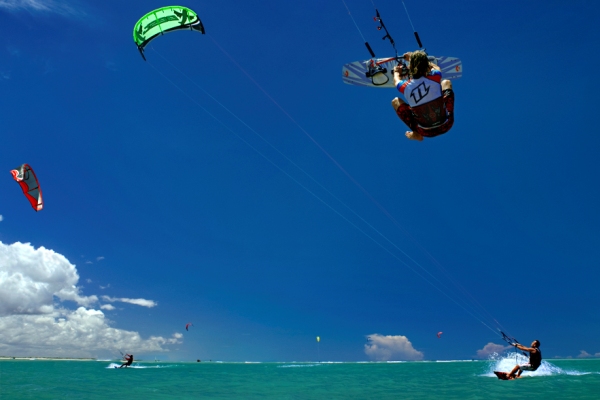
Another project we have is the rehabilitation of the historical centre of Natal. This is a very big and important project. We aren’t talking of square meters but of square hectares, in fact 98 hectares of roads, plazas, facades. We are maintaining the original architecture where possible but 21 of the 98 hectares have been knocked down so we can’t recuperate them. Within this concept of historical and cultural tourism we want to have an open plan historical centre so that there is no need to have a car or take a bus because everything can be accessed on foot. There will be a circuit that covers Santos Reis, Ribeira and the Cidade Alto, which are three neighbourhoods in Natal. We are also looking to bring tourists to the port region just outside of Natal. At the end of August or the beginning of September we will be opening the passenger terminal so that tourists will be able to experience the docks. It is going to be a place where culture will be preserved with shows from local artists in the upper part of the terminal.
However we aren’t forgetting our natural attractions, we have 400km of coastline. There is a small beach town called Sao Miguel do Gostoso that is about 60 or 70 km from Natal. This town is the centre in Brazil for windsurfing and kite surfing. The world champions of both sports live there. This town is unique in Brazil for its winds. Nearly all year round the wind is constant even in the city itself so the intensity of the wind is perfect for these sports, not mentioning the temperature of the water that is very agreeable. This is one of the places that we are promoting for water sports tourism.
Another thing we want to develop is a marina. There are two regattas that come past the Brazilian coastline and in particular pass by the coast of Rio Grande do Norte, but they don’t come into Natal because we don’t have a marina. So now we are consulting the nautical charter to analyse our coast; we already have some pre-selected points, some of which have had issues concerning areas that are environmentally protected, they need legal regulations, etc,. but we are working on it. From one of these locations we are looking to choose the site to build our marina. We know that on average a tourist that comes for water sports spends about $150 dollars per day.
We are working on bringing to Rio Grande do Norte some international 5 or 6 star hotels and also a golf course. We are negotiating with some of the largest world groups in these fields. We are talking to the NGN (National Golf Network) and some other companies who have come to our coast to analyse the economic and technical aspects to see if we have the capacity for this kind of high level course and also to see if we can provide the kind of demand that these groups expect. We are also being prospected by world groups for international theme parks, like the ones in Tenerife, Orlando and Europe. These are parks that want to come to Rio Grande do Norte to take advantage of our lagoons, our rivers, etc. and they are in the phase of having investors come and prospect in order to lay down a potential project.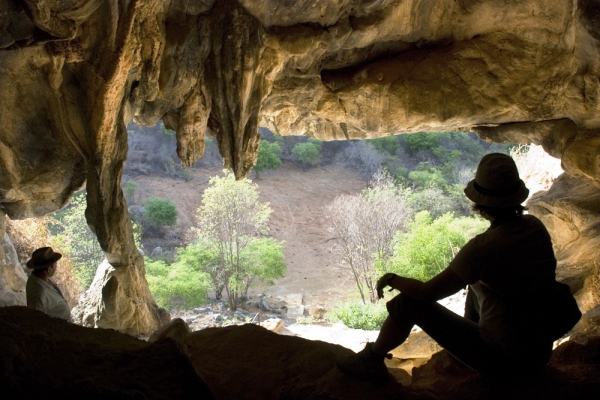
So I believe that in 2013 Rio Grande do Norte we will be bringing in lots of national and international tourism. We are working on developing and improving the infrastructure, particularly the highways and also focusing on safety. We are on a mission, this state has an area of 53,000 km2 it’s not such a small state, granted it isn’t one of the biggest states in this country, but we have a large area to work with. In the past we have focussed on ‘sun and sea’, now we are adding culture to this mix and we want to bring tourism into the interior of the state, not just to the coast. There are 667 municipalities in this state. We want to create an inventory that indicates what each city has to offer, focusing on the potential each place has. We are also looking at what the state can offer or do to maximise the potential in each municipality.
We want to discover new attributes and tools that we can focus on, for example mountain tourism; we have some spectacular mountain regions here. Some hotels and pousadas have already begun to carry out their own analysis of this potential and have invested in this area. We are building some infrastructure to introduce tourism into the interior, for example the cable car in the town of Martins. This town has great potential for geological tourism. There are 5 caverns in the surrounding area, one of which is called “Casa de Pedras”. There is a project in the pipeline to build a cable car that goes from the Casa de Pedras to another town called Mirante do Canto at an altitude of 800m. This will no doubt set us apart as a region in the north east of Brazil.
We have religious tourism. We have the tallest religious statue in the world. The statue of Santa Risa de Cássia is in Santa Cruz and is 56m high; it is in the Guinness Book of World Records. It beats the Cristo Redentor in Rio de Janeiro and the São Francisco de Canindé statue in Ceará. We are interested in developing religious tourism here in Rio Grande do Norte by creating a circuit called ‘Routes of the Saints’, which won’t only feature Santa Risa de Cássia in Santa Cruz but also the sanctuary of Nossa Senhora dos Impossíveis, located in the city of Patu in the Lima mountains which is another region that offers both religious and sporting tourism. In this town there is a ramp that has been built for paragliding. For many years people have come to Patu to try to beat the world records for the longest distance paraglide flight. The record was actually beaten recently. These paragliding experts continue to come to Patu to try to beat the record. There is good access to the sanctuary Nossa Senhora dos impossiveis already but there is no access to the paragliding launch ramp so we have a project to create access to this ramp.
Rio Grande do Norte celebrates two big religious festivals; Santana in Caicó in the Seridó region and Santa Luzia in Mossoró in the western region. These festivals attract about 150 thousand people every year. Therefore our idea is to integrate all of these religious attractions, the statue, the sanctuary and the festivals into this religious circuit. We want to provide the information about this ‘Route of the Saints’ in the tourist information centres in each city that has this kind potential for religious tourism.
We are also a developing a route to visit our caves. Here in Rio Grande do Norte there are close to 500 caves catalogued. Recently President Dilma declared by law a national park called Furna Feia between Mossoró and Baraúna. This national park contains the phenomenal Furna Feia cave. We are working with the Chico Mendes Institute of Biodiversity Conservation in order to create an environmental agreement concerning the caves that are being destroyed or eroded by development and those companies that have invested and are following this legislation fall under the same agreement in any area of Brazil. We negotiated with the institute and we came to the conclusion that this agreement will be regarding the Furna Feia national park and it will consist of providing information about how to avoid and deal with forest fires, fencing in the park, etc., so that this cave circuit can be one of our main tourist attractions. Ecological tourism is today one of the most important attributes for any state, there is currently a strong trend for ecological tourism and tourism that is based upon building up environmental awareness. We are in partnership with some institutions to begin to format within our tourism development plan the regions that have the potential to cater for this kind of tourism and to look at what needs to be prioritised because our ecological tourism is going to be about preservation. For example on our southern coastline, we have the project Tamar that protects our sea turtles, this charity has areas that are preserved as part of an agreement. These preserved areas in Rio Grande do Norte are around the towns of Sibaúma and Tibau do Sul. This charity protects the area between Sibaúma and Pipa which is one of the most famous beaches in Brazil. We need to make sure we protect the environment more and more. I think that human beings are probably the only animal that still isn’t aware of the importance of looking after the environment or of the damage that they cause to the environment. That is what we are working on, building up awareness.
In summary, we are working towards introducing tourism into the interior of the state, creating new tourist destinations and the consolidation of attractions for example São Miguel de Gostoso, and also complementing the ‘sun and sea’ reputation that we have here in Rio Grande do Norte. This is a general view of what we are working on here with the Governor of the state; tourism is a priority for the state of Rio Grande do Norte. There is a phrase that I have picked up that I really like: “there is nothing as transversal as tourism, and nothing as capillary as tourism”. Tourism affects the guy who grows and sells tapioca, the guy who sells coconut water, the guy that sells ice cream, the taxi man, the hotel owner, the owner the transfer company, etc. Everyone has something to gain from tourism from the poorest to the richest. I don’t think there is anything quite like tourism that can benefit the whole society. If this is the case then we need to do something about it, to make this state grow and I think tourism is the tool. I am passionate, I am vibrant, I put passion into everything I do, I believe if you aren’t passionate about what you do you won’t be successful or happy. I think tourism is going to transform this state. It already is doing so, but in a timid way. We have many natural resources in this state: salt, gas, oil and fruit for example. We have amazing productive chains, for example in minerals with iron, chalk etc. that produce a lot but I believe tourism will transform this state.
All our strength is going into this development. We need to focus on the potential of an area that maybe at the moment is not thought of as being touristic. We need marketing and publicity, which is not a cheap thing. We don’t have a huge amount of resources available for publicity so we need to make sure the publicity we get reaches the right audience even if it is a small amount of publicity. We need to publicise Rio Grande do Norte.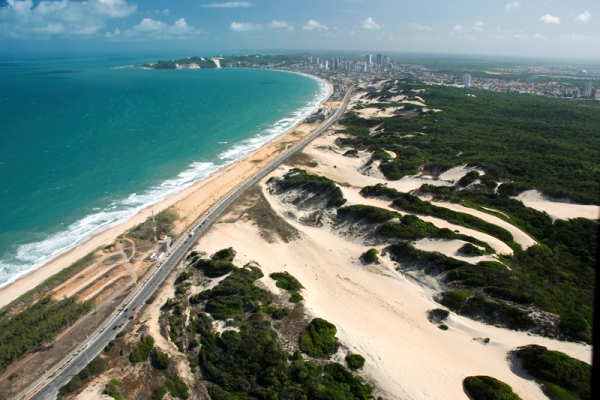
At the moment we are building the Br-101 highway in the north east. The Br-101 will strengthen motor tourism in this region. The highway will create a system that connects the 4 capitals in the north east but it won’t be just a highway for transporting goods, it will be a highway made for tourism also. We want people to plan to take this route when they decide to visit Recife or Natal because they know that on this highway there are hotels, a variety of restaurants, reliable unadulterated petrol stations, convenience shops with quality products, excellent receptionists in hotels and pousadas, etc. We want to deliver an excellent service, for example we want to offer the facility whereby if you rent a car in Maceió but you drop it off in Natal you don’t have to pay any extra. We want to offer good tariffs in the hotels all along the Br-101 so that any tourist can decide to come to any part of the region or to make unexpected detours and still find a good hotel at a good price. The tourists are going to know that there are 18 cities in Rio Grande do Norte that are participating in this project not only the capital cities of the north eastern region.
From the 4th to the 6th July we are going to hold a tourism conference about the Br-101 for the 4 states of the north eastern region, with a guided exhibition to present the four states and the cities that this highway is going to pass by.
Can you tell us a bit about business tourism in the state and also about the convention centre here? What kind of events do you organise here?
I would say that event and business tourism is fundamental for any region. Even if you have another type of tourism be it cultural tourism, ecological tourism or sport tourism etc., it will be event and business tourism that maintains the sector alive 365 days a year. The fixed costs exist all year; you have to pay the rent, the electricity, water and telephone bills all year round. Therefore it is essential to have the hotels, restaurants, and taxis trading even in the low season and business and event tourism are what keep this chain going. It is fundamental.
In Natal, the management of the convention centre is outsourced. It is a cooperative between the hotel network and the tourism operators, etc., who administer the convention centre. The centre is relatively small, it has an area of 8,000 m2 but we have a project to expand it to 20,000 m2. Our convention centre has something special that sets it apart from the rest, in fact I don’t know of any other that has a location like the one here in Natal. It is on top of the dunes, looking out at the sea and at the dune park which is an environmentally protected area. It’s in between the preservation park and the coastal road and it has an amazing view of the hotels along our coastline. The location is phenomenal.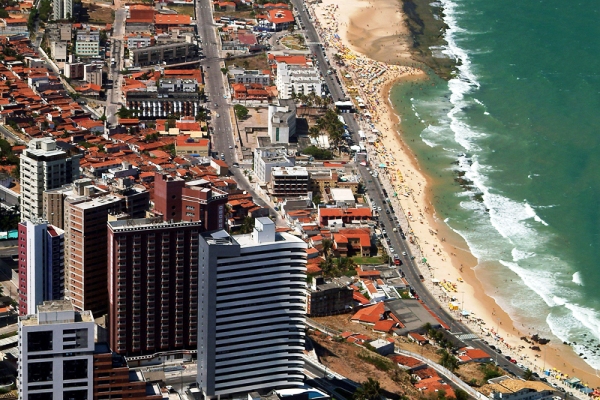
In terms of constructions to aid the development of our state; work is in progress on one of the most important components for the development of the state which is the airport São Gonçalo do Amarante. Brazil chose 5 regions to build in each an excellent multi-use airport both for cargo and for passengers. I am sure Rio Grande do Norte was chosen because of its geographical location. The airport will not only be an entry point to our state but also to the whole north east region of Brazil, the fact that we are equidistant to the other capital cities set us apart. I believe the airport should be inaugurated some time either in March or April 2014.
On the concession contract which is one of very few in the country, in fact there are only twenty three such contracts in Brazil, it states that the current airport will be closed down and that the São Gonçalo airport shall be the only working airport. The current airport is called Augusto Severo and was built by the state. When this contract comes into place the state is going to claim the airport complex that it built. This airport has 3 runways, two will act as an air base but the remaining area will be reclaimed and will function as an exhibition centre for trade fairs. It has an area of 1500 hectares, there is space for many shops, kiosks and various other businesses, all this will transform the area into a huge convention centre, and we also hope to include an aviation museum. This is the project that we are working on, and as soon as possible we will begin advertising the space. So you can see from this the importance that the state gives to event and business tourism.
We are going to continue developing our convention centre in Natal on the coast so that we can hold all sort of events, conferences, symposiums, debates etc. however for exhibitions this new space is going to be fantastic as it is a huge area with incredible parking, and it will be a great way to contemplate the cities of Natal, Macaiba, Parnamirim, São José de Mipibu all via Natal and the São Gonçalo de Amarante airport which was one of the 5 chosen airports. So as you can see the state really values business tourism and with the partnership of private investment we are developing this sector here in our state. Our convention centre is relatively small, but we have bookings up until 2018 just to give you an idea of our demand, these events are already contracted. So as I said, I believe event and business tourism is one of the best ways of maintaining a steady tourism economy.
You have mentioned the attractions here that you want to promote, can you tell us about how you publicise all this nationally and internationally?
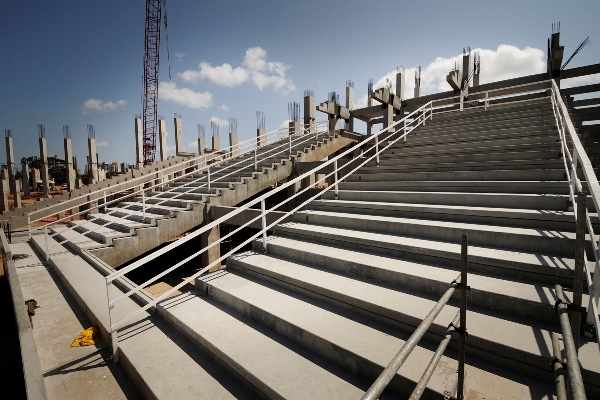
Firstly, we participate a great deal in trade fairs both internationally and nationally. We work in partnership with Embratur, often sharing a stand with them. We discuss with Embratur which fairs are definitely worth attending. As I mentioned earlier we don’t have a huge amount of funds available which means we can’t go to every fair in Brazil or around the world. However we select some of the best ones that are held in some of the best touristic centres in the world and we participate in partnership with private tourism companies. So this is one of the publicity tools that the state uses to promote tourism here in Rio Grande do Norte. We distribute material like leaflets, brochures, etc., we offer promotional drinks for example and sometimes we even bring with us representatives from our hotel network to show off the quality of our hospitality services.
Rio Grande do Norte has something which in my opinion is a huge advantage in terms of tourism and which really sets us apart here. We have more than 30 thousand hotel beds in this state. Proportionally no other city in Brazil has this potential; São Paulo has more beds of course but our population is 800 thousand whilst São Paulo’s population is 18 million. We have 30,000 beds and we hope to increase this to 35-36 thousand beds before the World Cup. We aim to have a hotel network that is of excellent quality, up to date and classified by the new system that we are introducing to be able to give international weight and focus to our hospitality services. We want to offer high quality hotels that are on par with some of the best international hotels. This is one aspect that really sets this city apart. I think that our hospitality facilities are one of the main factors that enabled us to be chosen as one of the host cities for the World Cup in 2014.
Not to mention our local gastronomy and selection of amazing restaurants. We have fantastic sea food on the coast of Rio Grande do Norte and in the interior of the state our typical cuisine is meat cured by the sun, wind and salt. We also have excellent cheeses, particularly what we called queijo coalho and queijo manteiga and we have tapioca, etc. As I said we have a diverse gastronomy, and it is one of our great attractions.
In terms of marketing, we place adverts in many magazines, particularly in airline magazines of airlines that run frequent flights to Rio Grande do Norte. We also place adverts on TV channels, in magazines that are distributed nationally, we work with other governments and also sometimes we have other smaller more individual publicity contracts.
Recently we have been presented with a great publicity tool that will be excellent for promoting our region. As of the 23rd of February one of the main TV channels here in Brazil has been broadcasting a television series called Flor do Caribe that was filmed nearly entirely here in Rio Grande do Norte. This is a great opportunity for us that we want to take advantage of as this program is on TV every day in homes all over the country showing our landscapes, our flora and fauna and our natural beauty. This is a fantastic resource. It will be on TV for 6 to 8 months and so all of Brazil and the world will be watching this program, as even Portugal has an exclusive TV channel that broadcasts Brazilian TV. We want to make the most of this opportunity with this TV channel that is doing something good for our state. I solicited a marketing plan to include the private sector and the hotel network, etc. because we are ready to create a partnership with this TV company to link up the images shown in this series with Rio Grande do Norte so that people can identify them and differentiate them from the north east region as a whole. We even would like to have some of the actors from the series accompany us to some of the trade fairs and to certain events, so that people are aware that this series was filmed in Rio Grande do Norte. We are working on this at the moment. We are trying to use all the marketing tools we have available in a responsible way making sure that we invest in the right areas and at the right moments.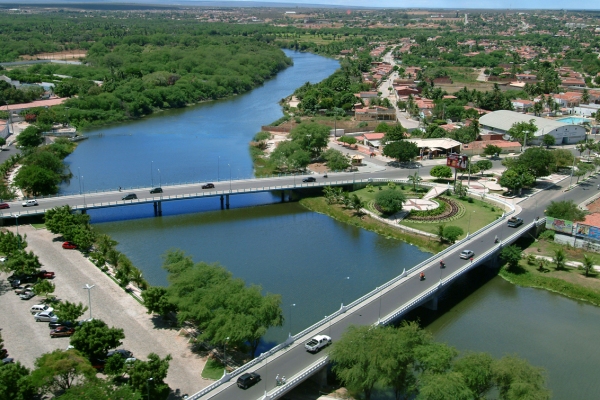
What other challenges do you face on a daily basis?
One of my greatest challenges at the moment is the economic crisis, particularly on a European level in countries that used to be consolidated trading centres with Rio Grande do Norte. This crisis is affecting aviation; there were few companies that achieved positive results in 2012. Thankfully one company that did achieve positive results last year was TAP. This is a very important airline for Rio Grande do Norte as it is the only international company that has a direct flight between Lisbon and Natal. However we are worried because they are being reduced, not only are the number of flights being reduced but also the seats available. So this is one of our biggest challenges: to increase the frequency of flights and the seats available to Natal.
Another challenge is to create a flight path to the second city of the state: Mossoró, because this city has a strong, growing economy based on salt, gas, petrol, fruit and chalk, yet currently no flights arrive there, whereas many cities of the same size and status have 2 or 3 flights a day. So we are working on linking Mossoró with the whole regional flight network.
Another of the big challenges we face is bringing tourism to the interior of the state because many cities have not yet projected tourism to be part of their development plan. Many city councils don’t have a secretary of tourism; sometimes they don’t even have an economic development secretary.
Currently we have projects for 5 tourism points in the state. We have the dunes on the coast for which Natal is the catalyst city. We have the mountain region for which Martins is the catalyst city. There is the rural region for which Santa Cruz will be the catalyst town, there is the white coast region for which Mossoró will be the catalyst and finally we also have the Seridó region in which Caicó will be the main city. Each of these 5 tourism hubs will include about 15 to 20 municipalities. These centres are going to have a tourism development plan that includes individual projects, inventories, etc. But we have 667 municipalities here in this state and there aren’t even 100 included in these 5 tourism centres. So that means that lots of towns are not going to be included in this inventory. Therefore if I want tourism to be the tool for economic development and for distribution of wealth I need to know which cities are not involved yet, and to create a touristic profile for them. Creating attractions, finding out about the culture and history of each place, what natural beauties exist, the myths and legends of each place, etc. Tourism can be introduced into any city, you can find an attraction everywhere whether it be from the history of a place, how it was founded, its potential for certain sports, horse riding, etc. We need to recognise and face our challenges. I am very motivated to take on these challenges. I don’t know anyone who isn’t a good administrator in the right circumstances and with the right budget. With determination we can face these challenges, we can come up with good ideas, we can make partnerships and we can succeed.
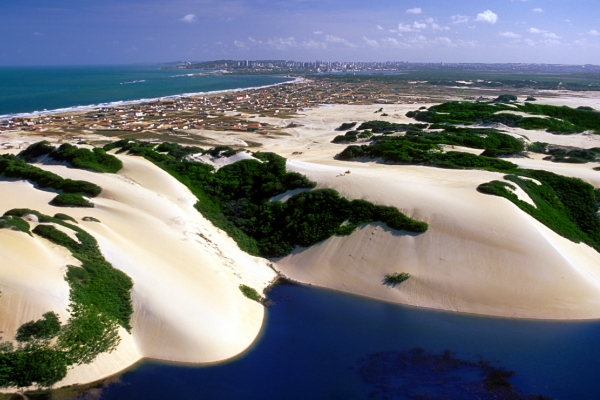
You mentioned quite a lot of opportunities, but can you pick and choose two or three areas that offer excellent opportunities for foreign investment?
It’s hard to mention just a few. I would say a theme park would be great. Due to our geographical location, our geological conditions, our rivers, etc. this would be a great place for a theme park. Obviously we need to do a study of the technical and economic issues but with our geographical location and with all the investment that we are putting in during 2013 and 2014 before the World Cup, I think it would be a great opportunity for investment.
Investors can take advantage of the World Cup. It’s a great moment to invest here and we are going to do what we can to bring in investment into Rio Grande do Norte. We are going to see lots of investment in logistics and property. Now with the inauguration of the passenger terminal in the docks, we are going to receive 24 cruises coming into dock between 5th December and 30th March. All this is coming together for Rio Grande do Norte to be a centre for tourism. So I think that a theme park would be a fantastic compliment to this.
Secondly, I think the marina offers a great opportunity for investment. I think that everyone really wants us to have a marina, I know the restaurant network wants the marina, as does the hotel network, the taxis, etc.
Another important area for foreign investment is not directly in tourism but is really important for tourism. We could really benefit from an integrated transport system of railways, waterways and highways. We need a railway from Natal to Mossoró to transport the main productive chains in the state that are salt, gas, iron, chalk, etc. and also the construction of a station for bulk solid cargo in the port of Mangue which is a coastal town in Rio Grande do Norte. We need this terminal to distribute our bulk solids primarily iron and chalk. We would be able distribute 2 million tonnes a year of just these two elements. We need to resolve the issue of logistics in Rio Grande do Norte. The railway would link up Mossoró to the port of Natal. There is a project for 200 million reals being invested in the port of Natal, developing the derivatives of iron, chalk and petrol and the bulk cargo terminal in the new port. Approximately 2 billion reals are being invested in the three modes of transport, railways, waterways and highways. I have no doubt that this development in Rio Grande do Norte offers great opportunities for investment. I could mention more areas but I think these are the most important, the theme park, the marina and the three modes of transport.

Natal is going to be a host city during the World Cup. What will be the impacts of the World Cup on the state of Rio Grande do Norte?
I think that Natal is going to have a ‘before and after’ the World Cup. The legacy that the World Cup will leave behind in Rio Grande do Norte is going to be very noticeable and important. I think we are going to even move some sculptures. The structural side is going to be visible, I spoke about the quantity of hotels, etc., but we still need to train our employees to give the best reception for the World Cup. The Arena das Dunas stadium is going to follow our new philosophy of being multi-purpose and will function 365 days a year and not just game days. It will hold shows and events, restaurants, exhibition halls, meeting rooms, i.e. a varied program of events all held in a privileged location. This I think is really important, as it will continue benefiting our state after the World Cup has finished.
We are preparing work on our transport system. We are making many highways dual carriage. We are improving access to the airport with the Br-304. We are implementing complex waterways and viaducts, etc. This is going to be the legacy left to the state from the World Cup in terms of infrastructure.
Another thing that we will gain from the World cup which I think is incredibly important is the training and the professional qualifications that people are going to receive. There are programs run by the Ministry of Tourism, the Ministry of Sport, programs given by the state government and also by private institutes to train professionals which are really going to make a huge difference to this state. People are going to have qualifications that they didn’t have before, and yes after the World Cup jobs will be reduced but these people will now be qualified, which for me is really important. We are working with the state government and we have recently awarded 1317 diplomas. Next month we are going to begin teaching 400 taxi drivers the basics in English, Spanish and Italian so that they can understand and reply a few simple phrases when a tourist or athlete arrives speaking another language asking to go to the beach, their hotel or the stadium, etc. We are also giving language courses in first aid vocabulary to our security employees, for example the city, military and transport police and our firemen. This is our great distinction; the quantity of people that are of going to gain qualifications. Perhaps you spend 2,000 reals in training one person, that might be how much it costs at the time, but it is worth so much more than that as they will have those qualifications forever and wherever they go.
So this will be the legacy of the World Cup, the infrastructure, the training centres, the qualifications. It will be very interesting when FIFA declares which teams are going to play in Natal, whether it be France, a rich country with an amazing culture who has good chances of winning, or maybe Spain or England both countries with potential to be champion. Which countries’ teams play here will be interesting because these players and fans will come here and discover our state and city. It’s going to be great propaganda for this state. People will come to see the football but they will also see our touristic attractions. So they have to be welcomed warmly, with excellent infrastructure and safety. I want them to say “I went to Rio Grande do Norte for the World Cup but I will return on holiday to see more of the state”. Studies show that we are the state with the highest percentage of people who return to visit: 67% of the people who come to visit the state of Rio Grande do Norte come back. Therefore we have to make the most of the World Cup to show who we are, what we have and what we can offer, so that when they return to their respective countries they have excellent things to say about our state and the message multiplies from person to person. The impact of the World Cup is going to unbelievable. Everything is interlinked with the World Cup; the circulation of the income, the infrastructure, the mix of cultures etc. and it’s all attainable. I really think here we are going to speak of a Natal and a Rio Grande do Norte before and after the World Cup.
To conclude, what is your dream for the next few years for the state of Rio Grande do Norte?
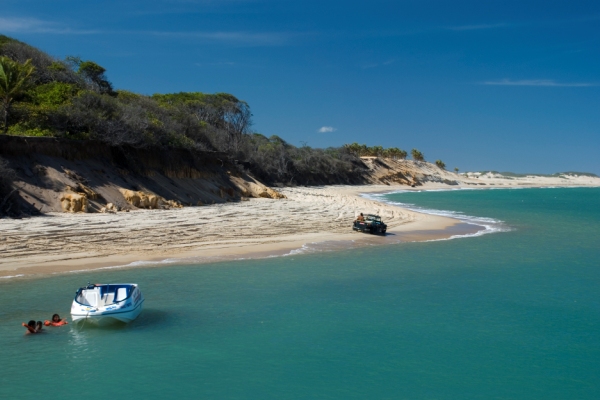
With respect to other states in Brazil I don’t think there is another state like ours in terms of the plurality of potential for economic development. I mentioned our mineral resources and tourism. Today private investment is only really beginning in this state. For example the wind farms that are being set up here for clean renewable energy. With today’s new technology these wind farms don’t have to be on the coast, they can be in any location in our state, in the mountains for example. The important things is that the wind intensity is regular and here in Rio Grande do Norte we have uniform winds all year round.
To give you an idea: in the next couple of years we are going to have 42 billion reals of investment come into our state. 16 billion will be invested in renewable energy, 8 billion in oil and gas, 2 billion in iron, 1 and a half billion in chalk, 1 and half billion in the São Gonçalo de Amarante airport and 400 million in dams, all these are investments that are spread over the state. 42 billion reals is a huge amount of investment. This is private investment which is different to public investment; private investors only invest when there is a guaranteed return on their investment, and they only invest where there are clear rules and no risk of legal changes that might affect their investment. So the private investment over the next two years is going to be more than 40 billion reals. This is investment that is already agreed, I’m not talking about the theme park or anything that is not yet confirmed. I have no doubt that Rio Grande do Norte will undergo a significant transformation after all of this investment.
What are the projects for the department of tourism? Well, we need to really consolidate the state as a tourist destination, and make sure that this consolidation generates wealth and enables wealth distribution, reducing the gap between rich and poor. I will give you an analogy; it’s not good to see riches concentrated in the hands of few. However with tourism the returns are for all of us, because those who come here spend here. So with the perspective of self-sufficiency, there is nothing that makes a man happier than being able to say “Hey, look at what I have bought with my money; the fruits of my labour”. Therefore I want tourism to be this tool now and in the future. I don’t know how long I personally am going to continue as State Secretary for Tourism, I have a business background in the salt sector but I can definitely say that I have no doubt that tourism is the best social tool. I truly believe that Rio Grande do Norte is the state.